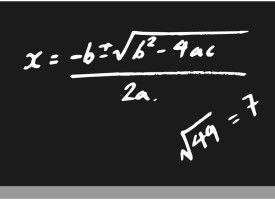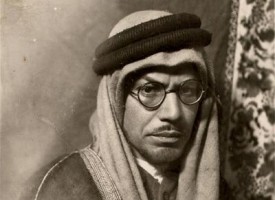He spent fifty years alone in a small, fourth floor apartment in Paris, living an austere life. His sustenance comprised of rice, fruit, milk and yogurt. But he was not a destitute Parisian; he was the most luminous star from the 20th century Muslim scholars. Apartment 4 Rue de Tournon, Paris VI, was the home of Dr. Muhammad Hamidullah.
There is no shortage of superlatives to describe this extraordinary man, a scholar par excellence, a muhaddith, a faqqih and an expert in international Islamic law and Islamic constitutional law. He knew 22 languages and was fluent in at least seven major languages, including English, French, Arabic and German. Over 130 books and more than 1000 scholarly articles are to his credit along with volumes of unpublished works. Unfortunately, his name does not ring a bell to the masses, as a man of his stature should have been known.
Early Life and Education
Muhammad Hamidullah was born in Hyderabad Deccan, India, on 16 Muharrum 1322H (19th February, 1908) in a family of jurists, scholars and Sufis. He began his education at home, then joined the Madrasah Nizamiyyah and passed the examination for the degree of Maulvi Kamil with honors in 1924.
Afterwards, he was admitted to the Usmania University in Hyderabad and passed the B.A., LL.B., and M.A. examinations. The Usmania University awarded him a fellowship for doctoral studies in International Islamic Law.
Pursuant to the fellowship award, he traveled extensively to many Islamic and European countries to collect information for his research. He received a PHD from Bonn University in 1932 and was appointed as a lecturer of Arabic and Urdu there.
He didn’t stay in Germany for long and went to Paris and registered at the Sorbonne University for another doctoral degree. The degree of D. Lit was awarded to him after only 11 months, which was an affirmation of his outstanding scholarship.
Upon returning to Hyderabad in 1938, he was appointed as a lecturer in Islamic Fiqh and afterward, he also taught International Islamic Law and International Law. When Hyderabad was invaded and forcibly annexed to India in 1948, he moved to Pakistan, and then after two years, finally settled in France and lived there for the next 50 years. His remarkable and illustrious scholarly career spanned over 70 years.
His Contributions to the Corpus of Islamic Knowledge
He was a researcher of the highest caliber and wrote extensively throughout his life. One of his remarkable achievements is translations of the Qur’an in German, French and English. He wrote on a wide range of subjects including fiqh, hadith, Sirah (biography of the Prophet Muhammad (SAW)), Arabic epigraphy, international Islamic law and Islamic constitutional law.
One of the areas in which he made major contributions was research and writing about the life of Muhammad (peace be upon him). His work is nothing like the traditional biographies, which repeat the same details; instead he explored various new aspects of Prophet Muhammad’s life, including his diplomacy, politics, battles etc. Al-Watha’iq al-Siyasiyyah is a remarkable work, which discusses in detail, over 300 documents from the time period of Prophet Muhammad and the four caliphs. These documents included correspondence, treaties, proclamations and assurances.
In another book, Six Originaux des letters diplomatiques du Prophete e l’Islam, he conducted a very detailed discussion on six letters of Prophet Muhammad. Le Prophet de l’Islam is a hugely popular biography of the Prophet in French. Among his other works are a short treatise, entitled The Battlefields of Prophet Muhammad in English and Urdu, Muslim conduct of state, Introduction to Islam,The First Written Constitution in the World, Muhammad Rasulullah and many more.
Contribution to Ahadith
Another highly valuable and significant contribution is that he discovered, edited and translated several rare manuscripts on various branches of Islamic knowledge including Fiqh, Sirah, Islamic history, Hadith, medicine etc.
It had long been argued by Orientalists and the critics of hadith that the sayings and actions of Prophet Muhammad were not recorded in writing till 200 years after his death. Although Muslim scholars had been refuting this claim, they had no proof to substantiate their refutation. Dr. Hamidullah has the honor of putting an end to this debate by discovering the Sahifah Hammam ibn Munabbih, which is the earliest written collection of hadith, thought to have been lost in the dust of time. Hammam bin Munabbih was a famous student and follower of the Prophet’s companion Abu Hurrayrah (may Allah be pleased with him). It was well known that Hammam had compiled this Sahifah comprising of 138 ahadith from the narrations by Abu Hurrayrah in the seventh century; however this compilation of ahadith was lost.
Dr. Hamidullah found the Sahifah in a library in Berlin and after comparing its contents with other compilations of the ahadith of Abu Hurairah it was found that there was not even a bit of difference between them.
Dr. Hamidullah’s Influence on Da’wah in the Western Europe
Aside from his invaluable scholarly works, Dr. Hamidullah made a lasting contribution towards dissemination and da’wah of Islamic teachings throughout Europe and particularly in France.
He was a true depiction of the Muslims of the earliest period, exhibiting most of their traits like piety, humility, taqwa, sincerity, love of human beings and the conviction to spread the knowledge of Islam. The influence of his writings, teachings and personal character immensely contributed in the resurgence of Muslim identity and in the acceptance of Islam in Western Europe.
In 1996, at the age of 88, he seriously fell ill and his elder brother’s grand-daughter Sadida came to Paris to take care of him. She remained with him for a year and then took him to the US. He remained there for the rest of his days. On December 17, 2002 at the age of 94, death gently embraced him in sleep.







thanks Pakistan insideer,
For sharing such anice article about Dr Hamidullah
Waiting for more good article in future ,
Dr Hamid Ullah was a great Muslim Scholar. He lived in an era of information. And made his mark on the Islamic fiqa and international Islamic laws. his scholarly contributions are famous in the world. he is no doubt a great scholar and liminary of our times. He deserves all the accolades paid to him.
Dr. hameed ullah has made great contribution to islamic Fiqah, and islamic international law. he has written scholarly books on different topics and subjects. he is the leading islamic scholar of 20th Century. All accolades to him. there can be no words of praise that can measure his scholarship, and contribution to understanding Islam
I feel enormously honoured to have him as my doctoral topic for my Ph.D. Truly a star in the galaxy of true Islamic Scholarship.
I am also a follower of his great work and have most of his book and work published in urdu except the articles published in old journals , would love to have these if available somewhere or a copy if someone have it , will be grateful for replies,anyone who is working on his life and work I can provide some financial support to him also for his work on Dr Hameedullah
I would like some help in preserving some of his books, can you give me your address to get in touch with you. thanks
I Think you should share your research also on Dr. Hameed Ullah & His Work.
Excellent article on one of the greatest Islamic scholar.. period
As it is evident from many sources, Dr Hamidullah was representing the erstwhile kingdom of Hyderabad at the League of Nations when the Nizam of Hyderabad Mir Osman Ali Khan was forced to join the State of Hyderabad with India.He decided to settle in France as he had an affinity due to his studies at Sorbonne. He was invited by Govt of Pakistan to help draft it’s constitution. He worked on it for sometime than left due to some differences. He stayed there in Pakistan but never moved to settle there.
as muhammad asad (leopold weiss) was europe’s gift to islam, dr hamidullah was islam’s gift to europe, alongwith the muslim ummah. dr hamidullah can be credited as one of the greatest muslim scholars not only of the 20th century but also of the entire islamic history.
really dr saab is the greatest hero and his work will be remember for centuries
dr hamidullah a true lover of islam. his love for islam paved the way for his acheivemets. i have done master nevertheless, i am infant in front of his studies.